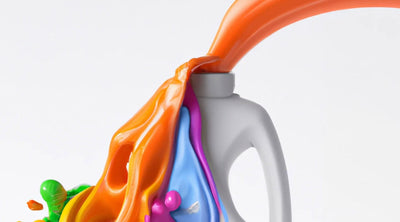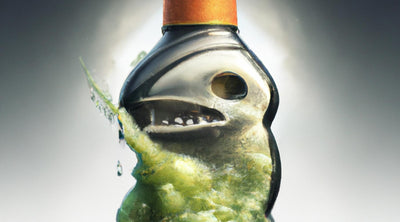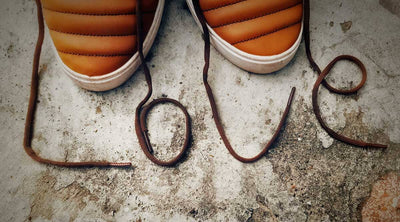What Is Vermicomposting & How To Do It: A Guide
joulukuu 09, 2021Vermicomposting is one of the most effective methods of making compost for your garden. It’s a way of turning your leftover food scraps into a nutrient-dense compost that is good for your plants by introducing 'little wrigglers'. So, instead of throwing away your food scraps, you can make free fertilizer by following our helpful vermicomposting guide below.
What Is Vermicomposting?
Vermicomposting is a fast and efficient way to recycle food and paper products using worms. It’s a natural and environmentally-friendly process of food disposal. Statistics have shown that food waste takes up more space in US landfills than any other type of waste.
This kind of compost making is actually preferred by gardeners because the nutrient content for plant life is so high. Getting started is easy, and you can have nutrient-dense compost in as little as two months.

Why Compost With Worms?
Worms are known as nature’s recyclers. They eat away at decaying leaves and other organic matter, breaking it down into a dark substance called ‘Humus’ that is rich in nutrients. Once buried into soil, these nutrients are easily absorbed by plants, delivering everything they need for optimal health.
The nutritional value of this worm compost is so good that it is better than most commercial fertilizers available on the market.
What You’ll Need To Start Vermicomposting?
Here’s what you’ll need to get started. Some of the equipment required consists of standard items you already have at home. If you don’t already have something at home, you can easily buy or repurpose items.
|
Tools / Equipment |
Materials |
|
Two buckets |
Composting worms |
|
Water jug or pitchers |
Newspaper, cardboard or coir |
|
Drill |
Food scraps |
You don’t need much, as you can see. Vermicomposting for beginners couldn’t be any easier!
What Can You Vermicompost?
As long as household items can decompose into organic matter, they can be used for vermicomposting. Here are a few items you can use in this process:
- Food scraps
- Cardboard boxes
- Newspapers
- Dead plants or grass clippings
- Tea leaves and coffee grinds
- Crushed egg shells
- Old natural cotton clothing
- Feathers and hair
- Sawdust or other non-treated wood
What Cannot Be Vermicomposted?
Certain items can affect the decomposition process or cannot be consumed by worms. Here's a list of things to avoid putting in your vermicompost bin.
- Leftover meat or bones
- Lemons, limes, or oranges as this can lead to the soil becoming acidic
- Plastics
- Onions
- Garlic
- Grease and oils
- Bread or any yeast products
- Milk or dairy products
- Dog or cat feces
- Treated wood
- Salt, pepper, or any other spices
It’s best to throw fruit scraps into your outdoor compost bin, not your worm bin. This will help keep fruit flies away.

Getting Started With Your Vermicomposting Bin
Here’s everything you should know about how to vermicompost.
- Select a spot in your home
Worms like to keep a favorable temperature with high moisture levels. Your vermicomposting worms find a temperature between 55-75 degrees optimal. This creates a habitable living situation, which in turn makes them work better to create the ideal compost. It is best to avoid placing your vermicompost bin next to any major heat or air sources such as ovens, heaters, air conditioners, or fans.
- Obtain a special vermicomposting bin or make it yourself
If you're obtaining a vermicompost bin, you’ll need a certain amount of waste and worms depending on your family size.
A family of two will most likely generate around half a pound of waste per day. To dispose of this effectively, you’ll need a 2x2 foot vermicomposting bin along with 1 pound of worms.
A family of four will have a higher rate of waste disposal. You may be generating around 1 pound of waste per day. For this amount, you are generally recommended to purchase two 2x2 foot bins with 1 pound of worms in each or one 3x3 foot bin with 2 pounds of worms.
If you are repurposing old buckets, the recommendation is to have one taller than the other. The taller bucket should measure roughly 15 inches deep and 20 inches wide. This is where the worms will go so drill holes into the sides to let oxygen in. Ensure this also has a lid to prevent them from escaping. The shorter bucket should measure roughly 25 inches in length, 15 inches in width, and 5 inches deep. Here is where any excess liquid, which is ideal for fertilizing your plants, will gather.
- Prepare a bedding material for your bin
When laying bedding for your bin, it’s best to maintain an even balance of carbon and nitrogen. The purpose of the bedding is to provide a feeding source for your worms, control odor, maintain moisture levels, and ensure proper aeration. The main types of bedding you can use for your bin are newspaper, cardboard, or coir.
Shredded newspaper works best for bedding because worms can easily digest it. If you're using cardboard or coir, tear it into little pieces to make it easier to consume. It's also a good idea to add a little soil. Not only does soil help the worms move around, it also makes the bin more habitable.
- Buy worms
Red wigglers or red earthworms are the best types of worms for vermicomposting. You don't want invasive species such as Asian jumping worms. Red wigglers eat waste fast and can consume 0.5 to 1lb of kitchen scraps per day, assuming they have the right living conditions. Once they're settled in, you can expect them to reproduce in a few weeks, with each worm capable of producing another worm every three months.
- Moisturize the bedding
Moisture is a key element that your worms need to survive and thrive. Before you put them into the bin, saturate the bedding with water so it feels like a sponge. These ideal moisture levels will keep your worms alive and breathing.
- Put an even layer of food waste on top of the soil
Once the worms are in the bin, it’s time to add scraps. Leaves, vegetable peels, tea bags, and coffee grinds are ideal items to add first.
- Close the lid and wait for 2 weeks
When the worm bin is full, close the lid on top and wait about 5 to 10 days. During this time, the worms are getting to work consuming all the leftovers you’ve added.
- Harvest the vermicompost after about 6 months
It’s important to check the bin every week to see how much bedding is left. If you notice that the majority of bedding is gone and compost is developing, it’s time to harvest. To gather the compost, dump the bin out onto a tarp or sheet of plastic and separate the compost from the worms.
The other option is to leave the lid off to expose the compost to light and air. The worms will naturally bury themselves down into the dark and moist areas of the bin. After a week, begin harvesting the compost, picking out any lost worms and placing them back in the bin. Once you have harvested the compost, add new dampened bedding.
Monitor The Bin Conditions
Over time, your worm bin will change in composition. It’s best to regularly check on it to ensure vermicomposting is taking place effectively. If you see worms trying to leave, it could mean that there's too much moisture in the bin and not enough bedding to soak it up. It could also be due to the type of food you're placing in the bin. Too much fruit, for example, can make the waste too acidic, which will make the compost unusable.
If you notice unusual foul odors coming from the bin, it could mean that certain food scraps are diseased or infested and affecting the PH balance of the worm bin. Just also be sure to place your worm bin in a place where the temperature is stable. It must be warm enough for the worms to live and eat.
Everyone Is Capable Of Worm Composting
Turning your food waste into fertilizer is a great way to deal with your kitchen scraps. It also indirectly helps us to reduce our carbon footprint because it's free and makes you aware of how much waste you’re actually producing. The fact that vermicomposting is so easy to do, even if you’ve never done it before is greatly beneficial too. Follow this simple guide to give your plants better nutritional content for growth.
MORE Sustainability 101 ARTICLES View all ›
Ready to make
the switch?
- Powerful Cleaning
- Dissolves Easily
- Skin-Friendly
- Eco-Friendly
- No Mess














